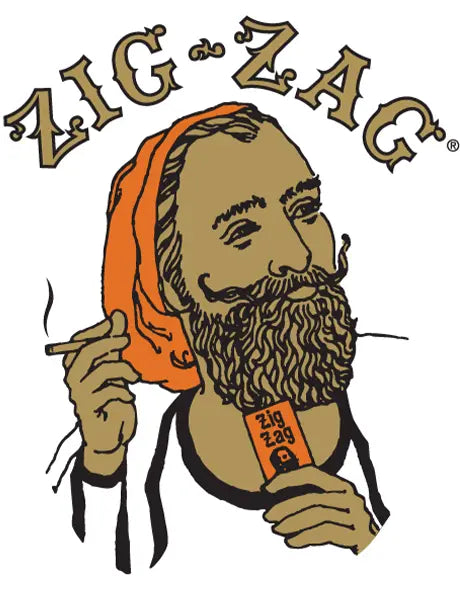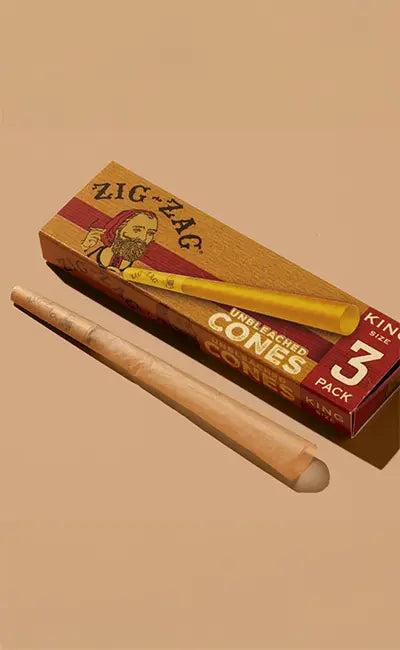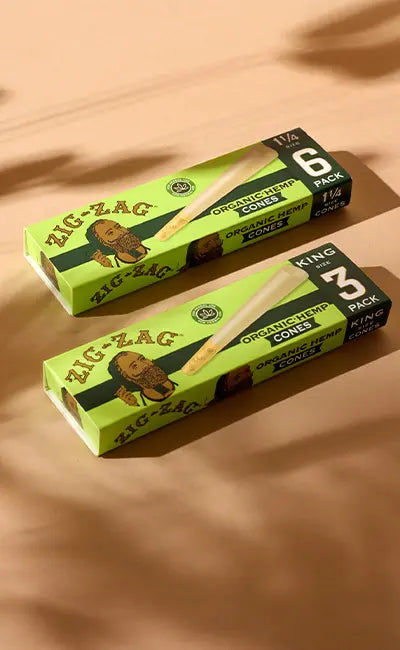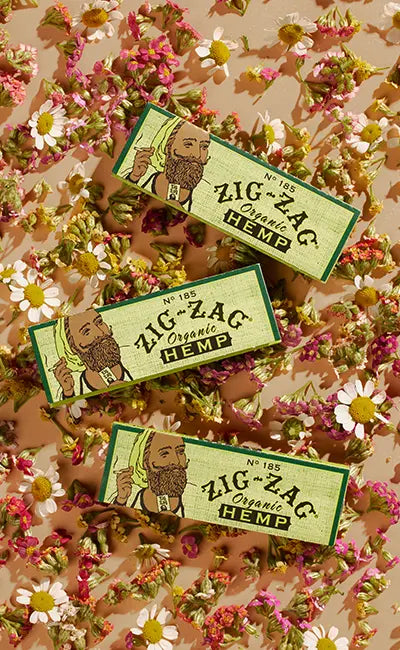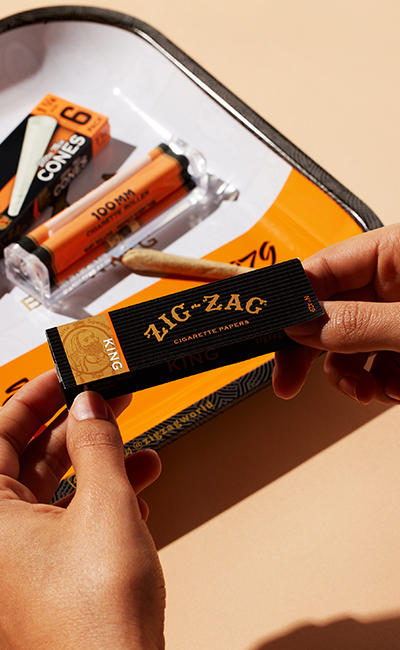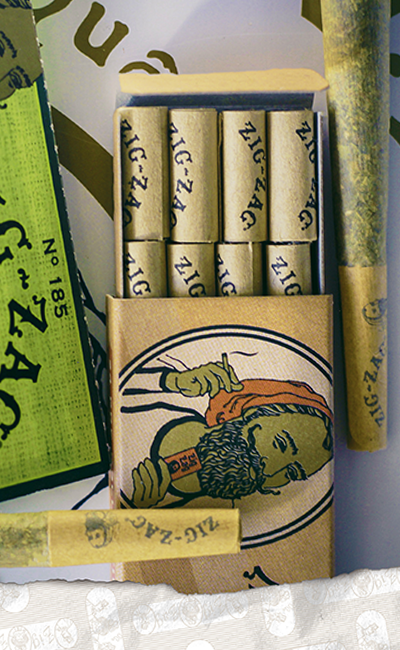Smoking papers have undergone a significant transformation, evolving from the classic rolling papers used for centuries to the innovative best hemp papers that have recently surged in popularity. This evolution reflects a broader shift towards more natural rolling options, accommodating the preferences of health-conscious smokers and those seeking a purer, more organic smoking experience. The journey from the traditional papers smoking experience to the modern embrace of hemp wraps illustrates a dynamic landscape of smoking culture, where tradition meets innovation.
The Rise of Hemp Wraps
Characteristics of Hemp Papers
Hemp papers are distinguished by their unique characteristics, largely attributed to the raw material used in their production—hemp fiber. This fiber is celebrated for its durability and eco-friendly nature, setting hemp papers apart from more processed smoking alternatives. The superior quality of the best hemp papers lies in their clean, natural composition, offering users a pure medium that doesn’t compromise the smoking experience. Their notable strength and capacity for a smooth, even burn are key factors in their popularity among smokers who value a more natural approach. As a result, hemp papers are highly regarded for providing an authentic, unaltered smoking session, aligning with the preferences of those seeking sustainability without sacrificing quality.
Sustainability and Environmental Benefits
The cultivation and
production of hemp wraps come with notable sustainability and environmental advantages, marking hemp as a superior choice in the realm of eco-conscious materials. Unlike traditional paper sources that often demand high water usage and chemical pesticides, hemp plants thrive with minimal water and without the need for harmful pesticides. This not only reduces the ecological footprint of their cultivation but also enhances the sustainability of the products derived from them. Additionally, the rapid growth rate of hemp contributes positively to the environment by absorbing a significant amount of CO2 from the atmosphere, further emphasizing the environmental benefits of choosing hemp-based products for smoking and beyond.
Tobacco-Free
The move towards
hemp wraps is significantly driven by their tobacco-free composition, catering to the health concerns prevalent among many smokers today. By excluding tobacco, these wraps offer a cleaner, more authentic way to enjoy preferred herbs, sidestepping the diverse risks tied to tobacco consumption. This characteristic is especially attractive to individuals in search of a healthier smoking alternative that does not sacrifice the essence or quality of their experience. The absence of tobacco in hemp wraps not only aligns with a growing demand for purity in smoking practices but also provides peace of mind to those conscientious about their health and wellness choices.
Traditional Rolling Papers Explored
Variety and Versatility of Materials
The variety and versatility of materials available for rolling papers cater to a wide array of preferences, ensuring there's a perfect match for every smoker's taste and style. This diversity allows users to experiment with different materials to find the one that best suits their smoking experience. Here's a look at the options:
-
Rice Papers: Renowned for their thinness, rice papers offer a slow burn that many smokers prefer. Their almost transparent quality and minimal impact on taste make them an excellent choice for those looking to enjoy the pure flavor of their herbs without the interference of the paper. Ideal for connoisseurs who prioritize the subtleties of taste in their smoking experience.
-
Flax Papers: Striking a perfect balance between strength and neutrality in flavor, flax papers are robust, ensuring they don't tear easily during the rolling process or while smoking. Their durability doesn't compromise the taste, preserving the natural flavors of the smoke. This option is well-suited for smokers who value a mix of practicality and purity in their sessions.
-
Wood Pulp Papers: As the most traditional and widely available option, wood pulp papers are favored for their user-friendly characteristics. They tend to be thicker and burn more quickly, which can simplify the smoking process for beginners or those seeking fast and efficient smoke. Their affordability and accessibility make them a staple choice for many.
This range of materials emphasizes the adaptability of rolling papers to the individual needs and preferences of smokers across the globe. Whether prioritizing taste, burn rate, environmental impact, or ease of use, there's a material that aligns with every smoker's requirements, making traditional rolling papers a versatile and enduring choice in the smoking community.
Environmental and Health Impacts
While traditional rolling papers are generally considered safe for use, their environmental and health impacts vary depending on the source materials and manufacturing processes. Papers made from non-organic sources or treated with chemicals can introduce unwanted substances into the smoking experience. Environmentally conscious smokers might lean towards papers made from sustainable sources, like hemp or organic rice, which have a smaller ecological footprint.
Rolling Paper Sizes and Their Impact
Finding the Right Size for Your Needs
Selecting the
right size for rolling papers is crucial as it influences not only the quantity of material that can be rolled but also impacts the burn rate and the overall pleasure derived from the smoking session. Smokers' preferences widely vary, containing individuals who prefer brief, solitary sessions to those who delight in extended, communal smoking experiences. Familiarizing oneself with the diverse sizes offered and comprehending how each aligns with specific smoking patterns is key to choosing the ideal paper for any given situation. This understanding ensures that each smoking session, whether alone or with company, is optimized for maximum enjoyment and satisfaction.
Size Varieties in Hemp and Traditional Papers
The variety in sizes of both hemp and traditional rolling papers is a testament to the diverse preferences within the smoking community. Each size is thoughtfully designed to cater to specific needs, from solitary, quick smokes to more social and extended sessions. Here's a breakdown of the available sizes and their intended uses:
-
Single Wide: Considered the standard size, single wide papers are compact, making them ideal for individuals who prefer a small, quick smoke. This size is perfect for a short, solitary session, offering just enough space for a modest amount of material.
-
1 1/4 Size: Slightly larger than single wides, the 1 1/4 size papers cater to smokers who enjoy a bit more substance in their session without venturing into the territory of large joints. They're perfect for a longer smoke alone or for sharing a modest roll with a friend.
-
1 1/2 Size: Providing additional space for material, 1 1/2 size papers are excellent for those seeking a medium-sized joint. This size strikes a balance between duration and quantity, offering a longer burn time for a more satisfying session without becoming too bulky.
-
Double Wide: As the name suggests, double wide papers offer twice the width of single wides, accommodating larger amounts of material. These are particularly suited for group sessions, allowing for the creation of substantial rolls that cater to several smokers at once.
-
King Size: Tailored for heavy smokers and social smoking scenarios, king-size papers are both longer and wider than standard options. They facilitate the rolling of substantial joints designed to last through extended sessions, making them the preferred choice for parties or gatherings.
Whether you're a solitary smoker who prefers the efficiency of single wides or a social butterfly who leans towards the communal experience of king-size rolls, there's a paper size to meet every need. This flexibility highlights the adaptability of rolling papers to various lifestyles.
Analyzing the Smoking Experience
Taste Profiles: Hemp vs. Traditional
The distinction between hemp and traditional rolling papers in terms of taste profile plays a pivotal role in the preference of many smokers. As previously mentioned, hemp papers are celebrated for their ability to provide a cleaner, more natural taste, enhancing the flavor of the herbs without imparting any additional taste. In contrast, traditional papers, often made from wood pulp or other materials, can sometimes introduce an unwanted flavor that interferes with the natural essence of the smoke. This makes the choice between hemp and traditional papers a matter of personal taste preference, with a growing number of smokers leaning towards hemp for its purity and minimal impact on the smoking experience's flavor profile.
Additives and Their Effects
Many smokers are now seeking more natural rolling options, steering clear of papers that contain chemicals or other additives designed to influence burn rates or flavors.
Hemp papers are often marketed as being more natural
, with minimal to no additives, aligning with the preferences of health-conscious consumers. Traditional papers, depending on the brand and type, can vary in their additive content, with some containing chemicals to regulate burn rates or enhance durability. Comparing additives in traditional rolling paper materials with the purity of hemp illuminates a clear preference for those concerned about the inhalation of unnecessary chemicals.
Purchasing Rolling Papers: Online and Beyond
Where to Buy Hemp Wraps and Traditional Papers
In today's digital age
, finding where to buy rolling papers online has become more accessible than ever. Both hemp wraps and traditional papers are widely available across a variety of platforms, from specialized online smoke shops to larger e-commerce websites. This convenience allows smokers to explore an extensive range of products from the comfort of their own homes. However
, the abundance of options also requires consumers to navigate through countless brands and types to find their preferred choice. Physical smoke shops and dispensaries also offer the benefit of seeing and sometimes even feeling the product before purchase, providing an invaluable experience for those uncertain about their preferences or those seeking expert advice.
Considering Quality and Brand Reputation
The
best hemp papers come from brands that focus on sustainability, purity, and user experience. Similarly, brands specializing in classic rolling papers often highlight the tradition, quality, and consistency of their products. Researching and reading reviews can help consumers measure the reliability and performance of different papers, ensuring a satisfactory smoking experience.
Online Shopping Tips for Rolling Papers
Here are a few tips to ensure a positive shopping experience: firstly, prioritize reputable vendors and brands known for their quality. Look for detailed product descriptions and satisfaction levels of other users. Consider the shipping policies, return procedures, and customer service responsiveness of the online store. Lastly
, be aware of the legal age requirements and regulations in your area to ensure a smooth purchase process. These strategies can help refine your search and lead to a more informed and satisfying purchase.
Evaluating Price vs. Performance
The balance between price and performance is a critical consideration when choosing rolling papers. Deciding whether to spend more on premium papers or opt for budget-friendly options depends on individual preferences for taste
, burn rate
, and overall smoking experience.
In navigating this choice, consider the factors that matter most to you—whether it's the purity of taste, the rate of burn, the environmental footprint, or the health implications. The wealth of options available means that there's something for everyone, from the
benefits of hemp rolling papers for the environmentally conscious to classic rolling papers for those seeking a timeless smoking experience. As the smoking culture continues to evolve, so too will the innovations and offerings in rolling papers, promising an ongoing journey of discovery for smokers around the world.


